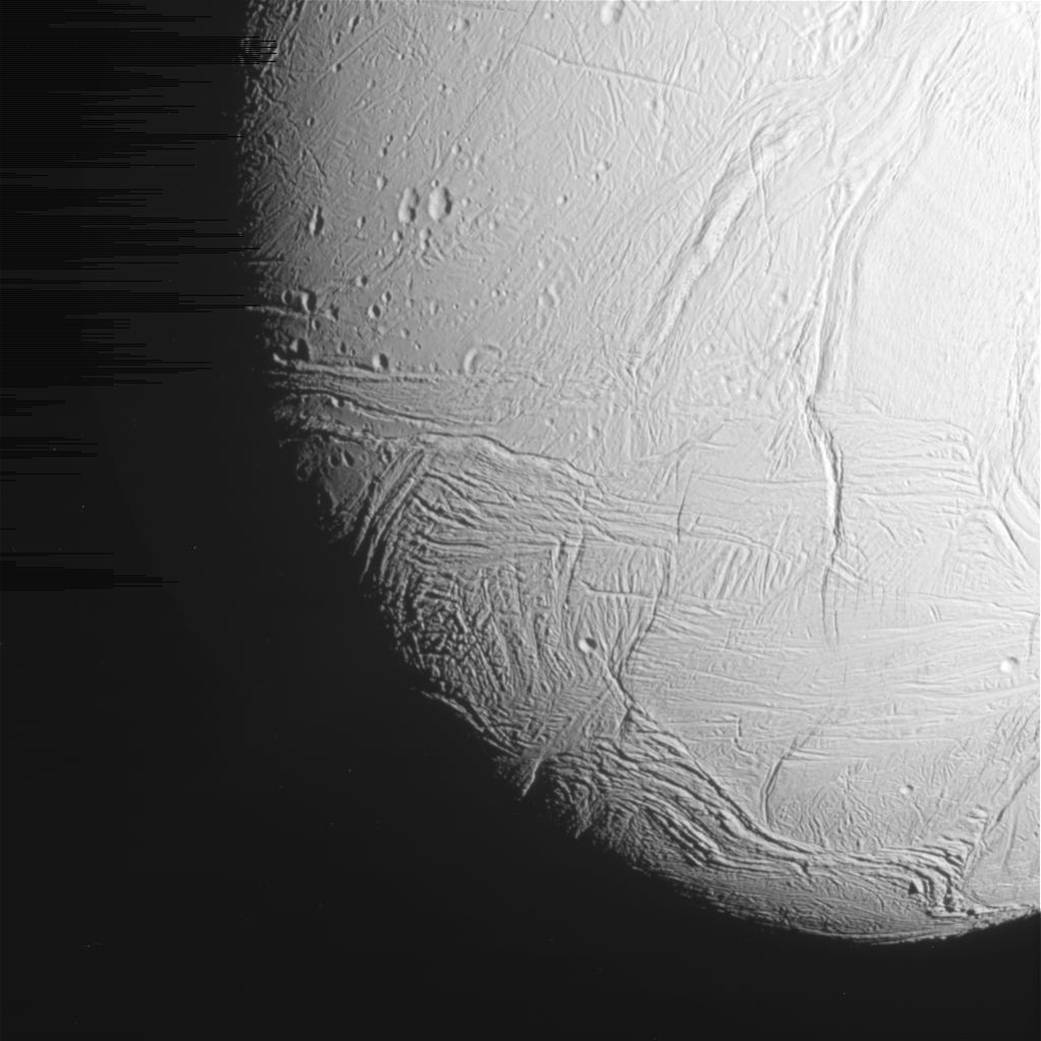This unprocessed “raw” image of Saturn’s icy, geologically active moon Enceladus was acquired by NASA’s Cassini spacecraft during its dramatic Oct. 28, 2015 flyby in which the probe passed about 30 miles (49 kilometers) above the moon’s south polar region. The spacecraft will continue transmitting its data from the Enceladus encounter for the next several days. Cassini’s next and final close Enceladus flyby will take place on Dec. 19, when the spacecraft will measure the amount of heat coming from the moon’s interior.
Researchers will soon begin studying data from Cassini’s gas analyzer and dust detector instruments, which directly sampled the moon’s plume of gas and dust-sized icy particles during the flyby. Those analyses are likely to take several weeks, but should provide important insights about the composition of the global ocean beneath Enceladus’ surface and any hydrothermal activity occurring on the ocean floor. The potential for such activity in this small ocean world has made Enceladus a prime target for future exploration in search of habitable environments in the solar system beyond Earth.
Image Credit: NASA/JPL-Caltech/Space Science Institute




























